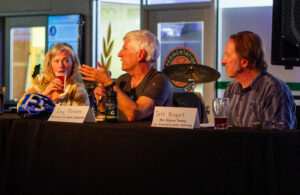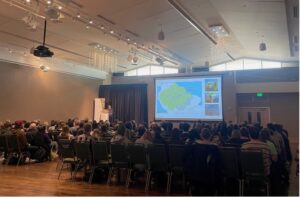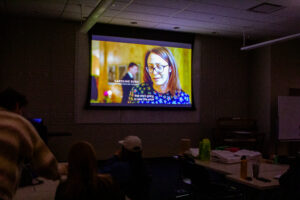By Gretchen Kroh, 2018-2019Sustainability Leadership Fellow and Ph.D. Candidate in the Department of Biology
Do you remember navigating the world as a child, when every new piece of information sparked curiosity and more questions? As a child, each new piece of knowledge was like an individual puzzle piece. Information you gained only served to spark new questions to which you responded with a chorus of “Why?”. This basic curiosity has shaped the worldview you hold today.
Just like the curiosity of a child, basic research is a branch of science that is curiosity driven and seeks to answer the “why” questions regarding the natural world. Basic research does not strive to produce a new product or a specific management practice, but instead tries to improve our understanding of how the universe works. Discoveries from basic research may seem inconsequential when viewed individually, but collectively, each discovery acts as a puzzle piece that drives innovation to improve society towards a more sustainable future.
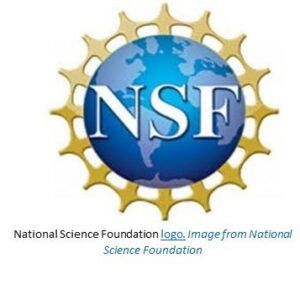 The National Science Foundation (NSF) is the major supporter of basic research across all fields of science. It provides funds to buy research supplies and fund researcher salaries. The NSF funds approximately 20% of basic research in the United States across more than 30 disciplines, from education to engineering. Its mission is to support science leading to new discoveries and innovations which will improve life. The NSF is vital in funding all of the fields of basic research that are necessary to develop methods for reaching goals of sustainability. However, the number of scientists engaging in basic research has increased steadily while the overall NSF funding rate has dropped by 3% in the past two years alone. This funding decrease equates to at least 1,200 unfunded research projects and the loss of all the information we could have gained through those efforts. Perhaps those lost discoveries could have innovated some aspect of life and allowed for a more sustainable future?
The National Science Foundation (NSF) is the major supporter of basic research across all fields of science. It provides funds to buy research supplies and fund researcher salaries. The NSF funds approximately 20% of basic research in the United States across more than 30 disciplines, from education to engineering. Its mission is to support science leading to new discoveries and innovations which will improve life. The NSF is vital in funding all of the fields of basic research that are necessary to develop methods for reaching goals of sustainability. However, the number of scientists engaging in basic research has increased steadily while the overall NSF funding rate has dropped by 3% in the past two years alone. This funding decrease equates to at least 1,200 unfunded research projects and the loss of all the information we could have gained through those efforts. Perhaps those lost discoveries could have innovated some aspect of life and allowed for a more sustainable future?
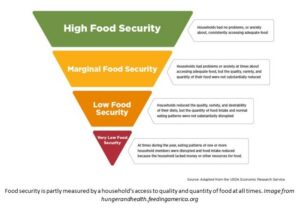 For each sustainability goal there is basic research from many different scientific fields that rely on NSF funding. For example, to address the issue of food security, we must increase crop production to sustain the growing population while improving crop nutritional value for global access to nutritious diets. Basic research in genetics and agricultural science has allowed for development of biofortification methods, which serve to improve nutritional content of edible parts of crops. One outcome of this basic research is golden rice which has increased vitamin A for human diets. In parallel with geneticists and agricultural scientists, basic researchers in soil science are studying how soil microbes are either helping or hurting plants to take up nutrients and water from soil. Since food is also strongly linked to cultural identity, basic social science is necessary to assess a communities willingness to adopt a new crop in their diet, and/or a farmers willingness to include new agricultural practices to improve soil health for sustainable crop growth. In another example, to partially address the issue of access to clean water, we must develop methods to effectively treat water for contamination, while also being able to determine very quickly when water quality is compromised. For this, basic research from chemistry is needed to measure levels of toxins in different waterways, and study new ways to sanitize water depending on the toxin in question. Basic health research is needed to determine how water borne illnesses can be treated, while basic ecology research is important to asses health of waterways by studying how water quality leads to changes in communities of aquatic animals. By integrating results of very different basic research fields, we can develop applied method that will address challenges of sustainability to improve lives globally.
For each sustainability goal there is basic research from many different scientific fields that rely on NSF funding. For example, to address the issue of food security, we must increase crop production to sustain the growing population while improving crop nutritional value for global access to nutritious diets. Basic research in genetics and agricultural science has allowed for development of biofortification methods, which serve to improve nutritional content of edible parts of crops. One outcome of this basic research is golden rice which has increased vitamin A for human diets. In parallel with geneticists and agricultural scientists, basic researchers in soil science are studying how soil microbes are either helping or hurting plants to take up nutrients and water from soil. Since food is also strongly linked to cultural identity, basic social science is necessary to assess a communities willingness to adopt a new crop in their diet, and/or a farmers willingness to include new agricultural practices to improve soil health for sustainable crop growth. In another example, to partially address the issue of access to clean water, we must develop methods to effectively treat water for contamination, while also being able to determine very quickly when water quality is compromised. For this, basic research from chemistry is needed to measure levels of toxins in different waterways, and study new ways to sanitize water depending on the toxin in question. Basic health research is needed to determine how water borne illnesses can be treated, while basic ecology research is important to asses health of waterways by studying how water quality leads to changes in communities of aquatic animals. By integrating results of very different basic research fields, we can develop applied method that will address challenges of sustainability to improve lives globally.
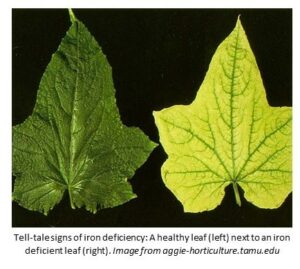 How do we get from basic research results to these real-world applications that build a more sustainable future? I consider myself lucky that NSF funding has allowed me to carry out my PhD in basic research. Like so many other basic research projects, my work may have relevant real-world applications which may lead to a more sustainable future by addressing the issue of food security. On a daily basis, my research aims to discover which genes and proteins in plant leaves are being turned on or off shortly after becoming iron deficient. I have already found that plants are discarding key gene expression and proteins needed for photosynthesis, the process by which plants produce their food, after only two days of iron deficiency. Interestingly, these changes to the proteins and gene expression happen well before we see the telltale signs of yellow leaves which signal iron deficiency.
How do we get from basic research results to these real-world applications that build a more sustainable future? I consider myself lucky that NSF funding has allowed me to carry out my PhD in basic research. Like so many other basic research projects, my work may have relevant real-world applications which may lead to a more sustainable future by addressing the issue of food security. On a daily basis, my research aims to discover which genes and proteins in plant leaves are being turned on or off shortly after becoming iron deficient. I have already found that plants are discarding key gene expression and proteins needed for photosynthesis, the process by which plants produce their food, after only two days of iron deficiency. Interestingly, these changes to the proteins and gene expression happen well before we see the telltale signs of yellow leaves which signal iron deficiency.
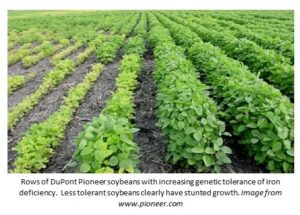 My research may seem quite removed from food security, but the NSF likely saw two relevant aspects of how iron deficiency in plants could lead to innovations to address food security: (1) iron deficient plants have insufficient levels of iron in their leaves, prohibiting their ability to do photosynthesis. Reductions in photosynthesis directly result in reductions to plant growth, ultimately reducing crop yields. (2) Iron deficient plants will have less iron in the edible portion of the crop, which means lower dietary iron for human consumption. This has important consequences regarding human nutrition because iron deficiency anemia (IDA) is the most common nutrient deficiency worldwide, resulting in symptoms ranging from fatigue to loss of motor skills. Elevating levels of iron in the crops can largely eliminate these symptoms and the prevalence of IDA across the planet. Since we do not currently have a sustainable way to address these issues of iron deficiency in plants, and since 30% of the worlds’ agricultural soils are iron deficient, my research is an important piece in the puzzle to developing innovations to address this issue.
My research may seem quite removed from food security, but the NSF likely saw two relevant aspects of how iron deficiency in plants could lead to innovations to address food security: (1) iron deficient plants have insufficient levels of iron in their leaves, prohibiting their ability to do photosynthesis. Reductions in photosynthesis directly result in reductions to plant growth, ultimately reducing crop yields. (2) Iron deficient plants will have less iron in the edible portion of the crop, which means lower dietary iron for human consumption. This has important consequences regarding human nutrition because iron deficiency anemia (IDA) is the most common nutrient deficiency worldwide, resulting in symptoms ranging from fatigue to loss of motor skills. Elevating levels of iron in the crops can largely eliminate these symptoms and the prevalence of IDA across the planet. Since we do not currently have a sustainable way to address these issues of iron deficiency in plants, and since 30% of the worlds’ agricultural soils are iron deficient, my research is an important piece in the puzzle to developing innovations to address this issue.
My discovery of early discarded genes and proteins in photosynthesis can be integrated into a method to measure gene and protein levels to detect iron deficiency in crops at the earliest stages. This early warning sign will allow agricultural producers to start treating iron deficiency before it impacts plant growth and nutritional quality. In this way, my basic research is leading to improvements in food security to hopefully contribute to a solution which will result in an overall increase in crop production and nutritional quality. Similar to my research, in every field of science seemingly inconsequential basic research will be essential for developing methods to answer challenges of sustainability to build increase quality of life globally.
Every day, basic researchers around the globe are discovering new pieces of knowledge. As we fit these pieces of the puzzle together we can address major sustainability challenges together, like food security, poverty, access to clean water and others. But, crucial in this quest of building a more sustainable globe, is funding for this basic science. So, when you are listening to politicians debate about the next budget, keep the NSF in mind. Without adequate funding for this agency, which enables discovery through basic scientific research, completing the puzzle for how to live sustainably may not be possible.
Any opinion, findings, and conclusions or recommendations expressed in this material are those of the author and do not necessarily reflect the views of the National Science Foundation.

